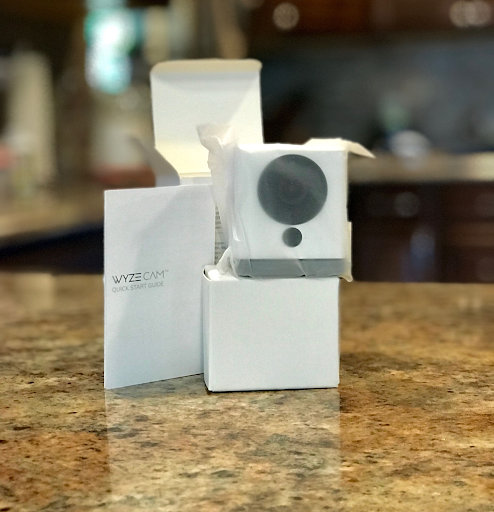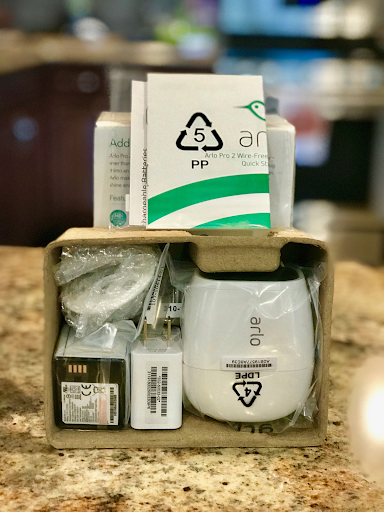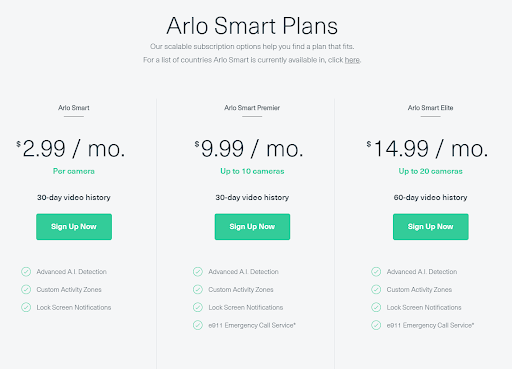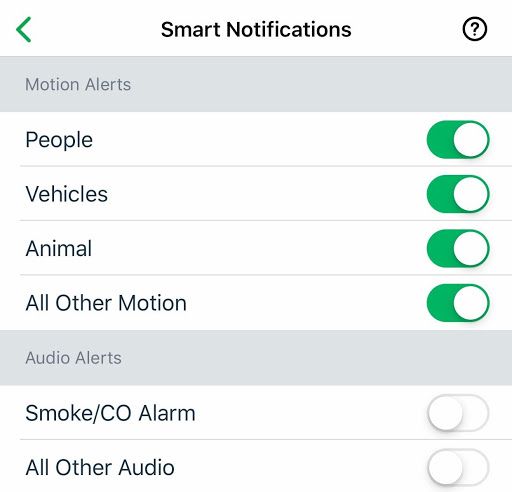By Gant Laborde
Every home is becoming a smart home. I remember showing off my voice-controlled lights and live video feed of my dogs to friends like I was some kind of digital wizard.
In 2016, the game was to find any smart device and get it connected with your existing system, if you could. But the truth is today my 70+ year-old mom can do all the cool things I used to do, and she has more cameras... and more dogs.
It's a new world where we've all got options. Every aspect of our home gets more connected and noisy. As our houses are filling up with smart streaming devices, the "smart" and the price become critical. We don't want to drown in expensive push notifications. The future of digital life is about intelligent and dependable notifications. This is where AI says, “hold my beer.”
Originally, cameras only supported simple motion detection. They should have come with a warning, "This will go off so often you will hate your life. If a paper moves, or squirrel visits, expect false notifications!" With basic motion, devices cry wolf over and over to the point where you disable the "feature" altogether. It was the intention that cameras relay information and security, but you'll get neither if you've got hundreds of false alarms.
That’s why I’m leaning hard on AI to be the next big thing in home security. AI watches tirelessly and helps you regain certainty over your domain because that’s why you wanted a home camera in the first place.
As an AI and smart home enthusiast, I've been adding gadgets, cameras, locks, sensors, and lights for years now. I'm familiar with the reliable and unreliable devices on the market, their artificial intelligence, and their natural stupidity.
Constantly experimenting, my home camera system has a Ring Doorbell, Vivint Smarthome, a Wyze camera, and an Arlo Pro 2 system. With all these options, a comparison of all would be too wild of a ride, even for me.
So I'm going to choose two cameras for an AI contrast. I think both of these have been and will continue to be significant influencers in what we can expect from home camera systems. Join me in digging into the AI of the Arlo Pro 2 and Wyze cam!
What kind of AI can we get?
All the cameras mentioned above have excellent video, 2-way audio, voice-assisted service, and regional scope detection. While their individual memory, rolling cloud coverage, and looks are significantly different, I’ll be focusing on the AI features so we can best get a handle on features of the future.
The Wyze Cam v2
The Wyze Cam v2 is small and cute. It reminded me of a scene from Rick and Morty, so I named mine “Butter Bot”.

You can see instantly from the packaging that it’s compact and quite impressive to fit a 1080p smart device. Even set up for the device uses computer vision to find and setup via QR code!

The AI
The green bounding box indicates areas of motion that caused detection to start - note that this is not the person detection.

Now let’s talk about person detection. The person detection on the Wyze Cam v2 (and also the original Wyze cam) is powered by Xnor.ai’s deep learning technology. You may recognize the company when they exploded onto the scene by creating a small, light-weight, AI device that was solar-powered, and light enough to be lifted by a balloon.
Xnor.ai leverages specialized deep learning techniques that allow simple CPU-based devices to hold their weight next to much larger GPU-driven devices. Because the person detection states “Powered by Xnor.ai” it’s safe to say the service is happening directly on the camera. This is corroborated by articles that accompanied the announced feature!

Especially following the privacy outrage by FaceApp, which was an AI app that claimed copyright to your photos when using them, this is a refreshing advantage. As firmware updates occur, we could possibly get new services with no fees, because everything is run on device.
Another nifty application of AI that the Wyze cam uses is that it can send you notifications if it hears a smoke or CO2 alarm go off. Not just any sound, like my dogs barking, but an actual alarm sound can trigger a notification. Pretty nifty!
The Arlo Pro 2
It’s not hard to get your hands on an Arlo. These devices are everywhere. The sleek design comes with a good size package, and assumes that you’ve already got an Arlo Pro base station to connect.

The AI
By default, the Arlo starts off with only motion and audio detection. There’s not really anything AI about the device out-of-box.

To crack open the AI aspects, we’ll have to jump in with a smart plan. Here’s the pricing in USD:

US Prices Listing - See UK here https://www.arlo.com/uk/landing/arlosmart/
These tack-on prices to the camera for added AI likely means the AI services for these devices is handled in the cloud rather than on-device. However, the features provided by Arlo Smart plans have a wide variety of detection schemes.
AI Features via Arlo Smart:
Person Detection
Vehicle Detection
Animal Detection
Package Detection
Unaccounted for on the site (but a good to know fact), the Arlo Smart plan includes the Fire/CO alarm alert in their smart notifications.

These are awesome things to detect! Vehicle detection could help you identify the comings and goings of cars near your home. Animal detection will help you keep track of your dogs, and package detection is perfect for those non-Amazon packages to still give you a notification.
One of the caution points I’ll express here is that the AI is deeply rolled into the “Smart” plan, which means your entire detection system is probably completely tied to how well your network connection is running at the time of the event. While we’re in a significantly connected world, a network issue or downtime could miss an event, and leave you none the wiser.
Another significant caution is that cloud-based detection must send everything to a server to detect people, as compared to Wyze who could trigger cloud recording only if a person is already detected. As you add cameras it seems like you might be adding some unwanted congestion to your vastly connected home. The AI cloud solution seems to have some significant drawbacks associated with sending data in and out, such as reduced data privacy, high bandwidth usage, and likely increased power consumption as well.
Evaluating the Two in Contrast
Person Detection

Now it’s hard to create concrete tests for person detection without getting raw access to the Machine Learning models powering each system, but it’s worth performing a few simple experiments. Here are the three experiments I performed (yes, I looked crazy doing these).
Spoiler Alert: they both performed exactly the same
| The Sprint Test - Quickly run past the device | |
| Wyze Cam v2 | Arlo Pro 2 |
| A quick sprint did not trigger person detection, only motion. |
Walking speed triggered person detection. | A quick sprint did not trigger person detection, only motion.
Walking speed triggered person detection. |
| The Hand Test - Only show the camera a hand | |
| Wyze Cam v2 | Arlo Pro 2 |
| Hands would set off motion but not be indicated as a person. | Hands would set off motion but not be indicated as a person. |
| The Person Test - Be a person! Does it detect me? | |
| Wyze Cam v2 | Arlo Pro 2 |
| Yup! Stand still and be a person, you’ll be detected. | Yup! Stand still and be a person, you’ll be detected. |
While both of these platforms have room to improve, it’s a pretty wonderful feature set for smart cameras. Arlo did misclassify me as a pet, so maybe some tightening up to be done there, but maybe it could have been due to my untrimmed beard :)
Money

As of right now, the Wyze camera is $19.99 USD and comes with a rolling recording of videos for 14-days. You can get extended recordings per device by adding an SD card to the camera. The person detection is a free service that you enable. That’s it. There are no subscriptions, trials, or up-sells.
I find this model very refreshing. This price point, the privacy of on-device storage and AI makes this a pretty nice gift. This is a big benefit of AI on-device vs cloud.
The Arlo Pro 2 retails for about $179.99 USD, and requires a pro base station ($70). The free plan comes with 7 days rolling recording in the cloud. To add the AI functionality you’ll need to add $2.99 a month per camera, OR $9.99 a month for up to 10 cameras, OR $14.99 USD a month for up to 20 cameras. So it’s safe to say you’re looking at about 10x the price of the Wyze camera.
I’m a fan of the Arlo camera system - I think Arlo innovates and creates quality products. While I’m always willing to pay for quality, I’m sure Arlo’s device could use some improvements that justify the advanced price tag. It’s going to become an interesting market as AI precipitates from the cloud to each edge device.
Value

Ten times the price (not including the base station) in order to manage 3 AI features that should be handled locally is rich, even for a techie like me. Especially knowing there’s nothing limiting Wyze from pushing a new firmware update to bridge the gap. Package, animal, and car detection are relatively simple AI models that could show up in a firmware upgrade and exist as possible free features, or maybe one time purchases. Essentially leveling the playing field.
AI for edge devices seems to be more powerful as a distributed architecture, rather than 100% cloud-based. Apple has announced all kinds of initiatives to protect privacy by doing just that, and I’d assume any business not doing so will fall behind while the competition passes savings on to their clients.
All things considered, I’ll be buying more Wyze devices after this evaluation. Both devices performed exceedingly well with person detection, and that’s the big feature for me. But Wyze provided my most important features in a bundle that won’t choke my WiFi or my wallet.
What does this mean for the industry and other home security companies?
The Wyze cam is small, low-power, continuously recordable on local memory, and AI-enabled, all for $19.99. Features like person, package, pet, and car detection are the future of scalable smart home security.
High-signal, low-noise AI-enabled devices at affordable prices will be the new standard in smart homes. Home camera companies will likely need to embrace AI on each device to meet the increasing standards of AI, and superstar AI companies that optimize detection for devices will grow with this increased demand. It’s an exciting future for people interested in homes that aren’t just smart, but smarter.
